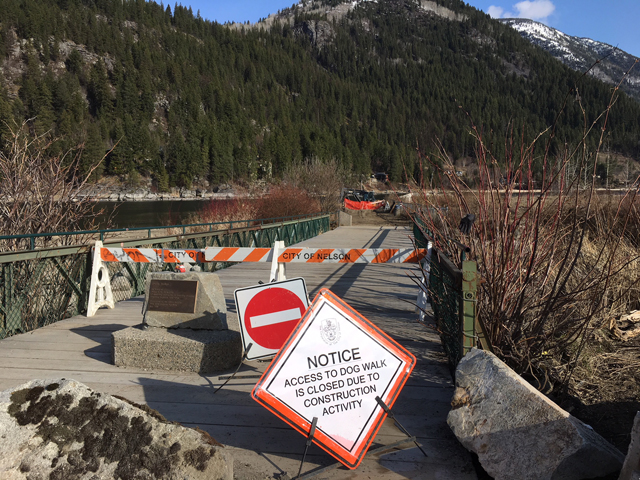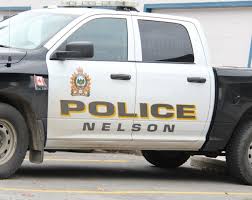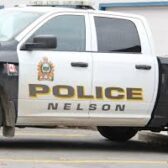Lake to be drawn upon as emergency intake water source: Public Works
Although the current diet of April showers is the unlikely harbinger of a dry and hot summer, the city isn’t taking any chances now as it looks to avoid a repeat of the previous desert-like summers.
The city has begun work on an emergency intake project — an endeavouron the municipal radar for many years — with activity beginning earlier this month at the mouth of Cottonwood Creek on the city’s waterfront.
The intake is intended for emergency situations where normal creeksources have either been adversely impacted and are unusable for a period of time, or in a drought situation where the creek source is unable to provide the volume of water required for a period of time, said Colin Innes, city director of Public Works and Utilities.
“The emergency intake has been put into place so that in an emergentsituation, the city would be able to bring in a portable treatment facility and draw water from the lake,” Innes explained.
The emergency source of water had been identified as the West Arm ofKootenay Lake for a number of years but the work is now finally underway to “operationalize” the emergency plan, he said.
With the water source so close to many possible contaminants on thewaterfront, several precautions would be taken if the intake were called upon, Innes noted.
“As I indicated, any water taken from the lake would require treatmentusing a portable treatment facility to make it potable,” he said.
“There is water quality data from the intake location indicating thatthrough the use of a proper portable treatment facility, the city would be able to achieve a water quality that satisfies the Canadian Drinking Water Quality Guidelines.”
Innes said portable treatment facilities are available from a numberof vendors which are designed for remote and emergency situations, with the facilities able to filter and chlorinate the water, as well as applying ultra-violet treatment.
The site selected for the emergency intake project was based onoperational proximity from the municipal yard and available power. It would be able to provide water for the lower reaches of Nelson.
In 2006 it was revealed in the Water Master Plan that one priority ofthe city was to develop an emergency water supply system to make the community more resilient to drought events.
Still searching for secondary source
At the city budget presentation in early March it was noted that theoverall capital plan for Nelson includes $8.3 million for water, sewer and hydro, as well as securing a secondary water source for the city.
The establishment of a secondary water source will eventually be asignificant cost to taxpayers, a city report noted in December of last year.
“It is important to note that since council finds that creating asecondary source for water is the priority for the water system they are willing to move forward on this project even if the city is unable to secure grant funding,” read the report to council, “and that if that is to happen then it is likely future water rates will need to increase at a higher rate than what is currently projected.”
Logging in the watershed
Protecting the city’s water source and watershed will be paramountthis year as Kalesnikoff Lumber Company in Thrums will be looking to salvage dead timber in order to suppress a Douglas-fir bark beetle infestation in the Selous Creek area just west of the city.
The wood needs to be removed in order to safeguard the city’ssecondary drinking water source, said Gerald Cordeiro, development supervisor of Kalesnikoff Lumber Company Ltd. (KLC).
The company had completed work on four proposed cut blocks, with theintent of salvaging dead timber and to suppress the beetle population by harvesting currently infested timber.
“(T)his area is experiencing a significant Douglas-fir bark beetleinfestation,” he said. “Due to the life cycle of the beetles it is imperative that all infested timber be removed and milled prior to next year’s beetle flight, which may occur as early as the end of April.”
Normally the visual quality objective (VQO) of retention prohibits anylarge-scale harvest in a place like the Selous Community Watershed, which is part of Nelson’s watershed along with Anderson and Five Mile Creek.
But an application will be made to the Ministry of Forests, Lands andNatural Resource Operations (FLNRO) to temporarily exceed the VQO due to the forest health concern.
However, because portions of the proposed harvest areas fall withinthe community watershed, additional professional assessments will be done to “ensure the water resource will not be adversely affected,” said Cordeiro.
Delving into the master plan
Last year the city’s Public Works department delivered the new WaterMaster Plan, projecting future water needs of the city — using a long-term growth rate of 0.6 per cent — pegging its 2066 population projections at 14,500.
Innes said the updated Water Master Plan underscores the importance of retaining and protecting the Five Mile Creek Source, currently the city’s main source of water.
As well, in order to maximize flow from the creek, the plan alsorecommended increasing the diameter of the Five Mile Creek pipeline and realigning the routing of the pipeline.
The plan also laid out how centralizing the treatment of all existingwater sources in Nelson — connecting Anderson Creek, Fell Creek and Selous Creek to the Mountain Station facility — would allow all existing sources of water to undergo the same level of treatment as the primary Five Mile Creek source.
UV disinfection — necessary for all water sources — would eitherinvolve the construction of two additional UV facilities, or the requirement that water from these creek sources be redirected to the existing treatment infrastructure at Mountain Station.
The plan analyzed a number of supplementary source options, includingClearwater Creek, Grohman Creek, Apex Creek and Kootenay Lake, extolling merits as well as a number of challenges associated with each source.
But using Kootenay Lake as a replacement water source (with a largefiltration plant) could be the most viable option, Innes stated.
“Kootenay Lake has the ability to be the sole source of water(assuming suitable sized treatment plant) in all scenarios but represents a costly source to develop due to the need for a filtration plant,” he wrote in his report.


























